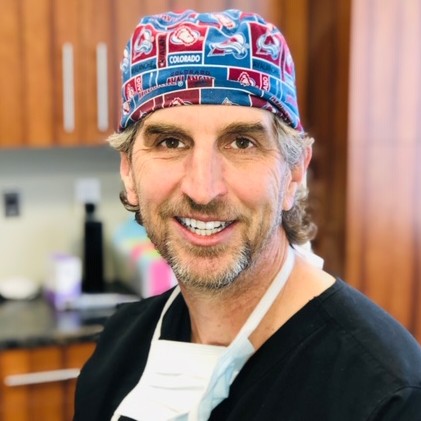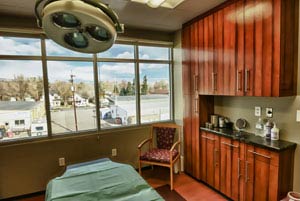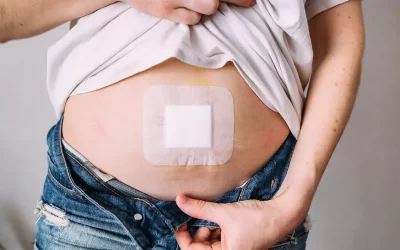Liposuction is often seen as a quick fix, but its permanence is more complex than many realize. Beyond simply removing fat cells, long-term results depend on how your body adapts over time. Understanding the relationship between fat removal, lifestyle habits, and natural aging is key to maintaining your sculpted look. This article explores the hidden factors that influence liposuction results and practical steps to keep your contours lasting for years.
Understanding Liposuction: What Does “Permanent” Really Mean?
When people hear “liposuction,” they often think fat removal is forever. While liposuction does remove fat cells from treated areas, it’s important to know that your body can still gain fat elsewhere. The fat cells removed won’t come back, but remaining fat cells can grow larger with weight gain. This means liposuction is permanent in terms of cell removal, but not a shield against future weight changes. Also, how your skin adapts after fat removal affects the final look. Factors like skin elasticity and aging play a role in how long your results last. So, “permanent” doesn’t mean untouched—it’s about managing changes in your body over time for lasting contour.
The Role of Fat Cell Removal vs. Weight Gain
Liposuction permanently removes fat cells from targeted areas, which means those cells won’t return. However, the body’s remaining fat cells can still expand if you gain weight. This is why liposuction isn’t a substitute for a healthy lifestyle—it’s a contouring tool, not weight loss surgery. Interestingly, fat tends to redistribute differently after liposuction, sometimes showing up in untreated areas like the abdomen or thighs. This shift can be surprising and is rarely discussed openly. Understanding this balance between fat cell removal and weight gain helps set realistic expectations. Maintaining a stable weight through diet and exercise is key to preserving your liposuction results and avoiding unwanted fat redistribution over time.
Key Factors Affecting Long-Term Liposuction Results
- Body’s Natural Aging Process: As we age, skin loses elasticity and muscle tone declines. These changes affect how your body looks post-liposuction, regardless of fat removal.
- Fat Redistribution: After liposuction, fat can accumulate in untreated areas. This subtle shift often surprises patients but is a natural body response.
- Lifestyle Habits: Consistent healthy eating and regular exercise are crucial. Without them, remaining fat cells can expand, impacting your results.
- Hydration and Skin Health: Well-hydrated skin maintains better elasticity, helping your body contour look smooth and natural after surgery.
- Weight Fluctuations: Significant weight gain or loss can alter your liposuction outcomes, sometimes causing unevenness or sagging.
- Muscle Tone: Strong muscles support the skin and underlying tissue. Maintaining muscle tone through exercise enhances the longevity of your results.
- Post-Operative Care: Following your surgeon’s aftercare instructions—including compression garment use and activity restrictions—optimizes healing and outcome quality.
Understanding these factors can help you manage expectations and maintain the benefits of your liposuction over the long term.
Essential Post-Liposuction Lifestyle Habits
After liposuction, your habits play a major role in how long your results last. One often overlooked practice is maintaining steady hydration—water helps flush toxins and supports skin elasticity. Eating anti-inflammatory foods like leafy greens and omega-3s aids recovery and minimizes swelling. Strength training is also key; it improves muscle tone, which enhances your new shape. Many people focus only on cardio, but resistance workouts offer longer-term body sculpting benefits. Avoid crash diets—they cause rapid weight shifts that stretch the skin and disrupt fat balance. Getting consistent sleep is another underestimated factor; rest regulates hormones that control fat storage. Finally, limit alcohol and sugar, as both promote fat accumulation in areas untreated by liposuction. These small but consistent choices make a significant difference in maintaining your body contour, especially as your metabolism and hormones evolve with age.
Managing Weight: Strategies for Liposuction Maintenance
Weight management after liposuction is less about restriction and more about consistency. One uncommon yet effective strategy is mindful eating—recognizing hunger cues and avoiding emotional snacking. Prioritizing protein in every meal supports muscle retention and keeps you full longer. Avoid “yo-yo” dieting, which can shift fat storage to untreated areas. Instead, focus on nutrient-dense foods and stable eating patterns. Regular body composition tracking, not just scale weight, helps you monitor changes in fat vs. muscle. Walking daily—even just 20 minutes—can regulate insulin and cortisol, two hormones tied to fat retention. It’s also helpful to reevaluate your routines every few months; small seasonal changes can subtly affect your habits. Long-term liposuction success depends on sustainable lifestyle rhythms, not perfection.
How Aging and Skin Elasticity Influence Your Results
Aging plays a quiet but powerful role in how your liposuction results hold up over time. Even after fat removal, the skin’s ability to bounce back is driven by collagen and elastin—two proteins that naturally decline with age. If skin elasticity is low, contour changes may be less defined or appear uneven over time. Hormonal shifts, especially around menopause, can affect fat distribution and muscle tone, which impacts your long-term shape. Sun exposure and smoking can also speed up skin thinning, reducing how smooth your results look. For patients over 40, combining liposuction with treatments that support skin firmness—like microneedling or laser therapy—can help preserve a tighter, more youthful contour as the body continues to age.
When to Consider Touch-Ups or Additional Treatments
Not All Results Are Final Right Away
Swelling can mask final contours for months. Once healing settles, small irregularities or stubborn fat pockets may become more noticeable.
Body Changes Over Time
Weight gain, hormonal shifts, or natural aging may alter your results. This doesn’t mean the procedure failed—your body simply evolves.
Skin Tightening May Be Needed
If your skin doesn’t retract well post-lipo, non-surgical skin tightening treatments like radiofrequency or laser may enhance your outcome.
When a Second Look Makes Sense
Patients often return months or years later for minor touch-ups to maintain definition. It’s not about doing more—it’s about refining what’s already working.
Talk to Your Surgeon Early
If you’re unsure whether something is normal healing or needs correction, it’s best to consult early rather than wait. Touch-ups are most effective when timed right.
Conclusion
Liposuction can offer lasting, transformative results—but only when paired with informed, consistent lifestyle habits. Understanding how your body changes over time, especially with age, weight fluctuations, or skin elasticity, helps you manage expectations and outcomes. Long-term success depends on more than the procedure itself—it’s a collaboration between surgeon and patient. Whether you’re exploring options or seeking ways to maintain past results, expert guidance makes all the difference. Visit Boulder Valley Plastic Surgery or call us at (303) 449-6666 to schedule an appointment and get personalized insight on your body goals.





